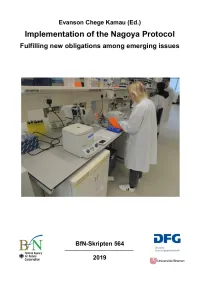BfN Schriften 564 - Implementation of the Nagoya Protocol: Fulfilling new obligations among emerging issues
Description
The implementation of the third objective has suffered many setbacks over the years. Alt-hough restrictive rules of the providers and lack of compliance measures in user countries bore part of the blame for the debacle, the diffuse nature and often voluntary disposition of the provisions likewise led to this result. To try and resolve the challenges encountered and to operationalize access and benefit-sharing (ABS) the parties to the CBD agreed to nego-tiate a more concrete and binding instrument under the Convention. Following the negotia-tions, the Nagoya Protocol on Access to Genetic Resources and the Fair and Equitable Sharing of Benefits Arising from their Utilization to the Convention on Biological Diversity was adopted in Aichi-Nagoya, Japan, in 2010, eighteen years since the adoption of the CBD. The Protocol came into force in 2014 and now has a membership of 123 parties in-cluding the EU. Upon becoming party to the Protocol, each member is obliged to put na-tional measures in place to comply with its provisions. However, countries have leeway not to establish any access measures if they choose not to subject access to PIC and MAT, but must ensure compliance with other parties’ measures within their territory.
